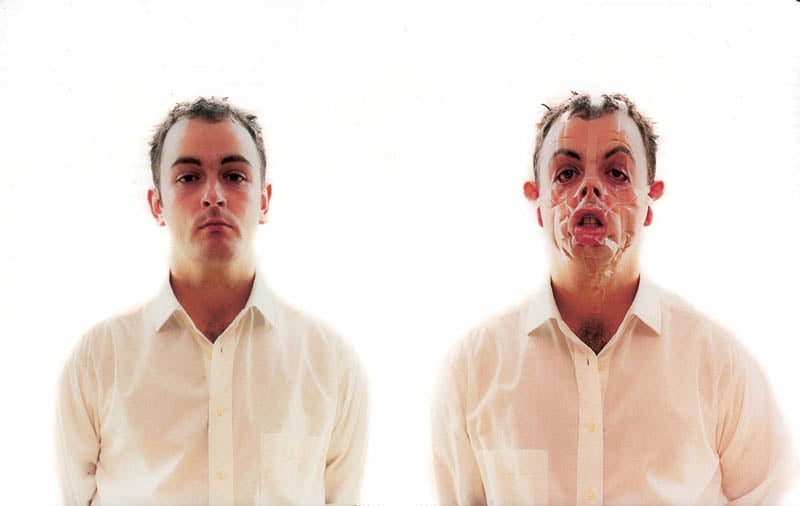Blind Spencer (Mirror)
2002 - Photography (Photography)
61cm x 65.3cm
Douglas Gordon
Blind Spencer is part of the series “Blind Stars” including hundreds of works in which the artist cut out the eyes of Hollywood stars, in a symbolically violent manner. An emptiness (some are burned letting appear a white or mirror background or a mirror) replaces the eyes, giving the impression of a blind eye deprived of all expression. Paradoxically, the work looks at us all the more intensely. The glamorous black and white portrait of Spencer Tracy evokes the golden age of Hollywood, with all of its codes like seductive smiles and directional light, not to mention a perverse use of the gaze. Gordon talks about his work as a process of “research, memory, of stories that took place, the films I’ve seen … I am interested in looking for what happens when you look at something so long that it disappears. You are viewing an image, you start looking through the image, and you reach the other side and then you return to the surface. ” This act of cutting, pertinent to a new generation of artists focusing on the ready-made, image fragments and found sound footage, juxtaposes temporalities like in video editing and introduces a hint of melancholy. The act of cutting fascinates and repels, in what Freud called an experience of “the uncanny.” The viewer can only contemplate a loss of the soul which is traditionally reflected in the eyes. After Andy Warhol and his celebrity portraits, Douglas Gordon tracks the iconic and deadly character of his subjects.
Douglas Gordon is a celebrated Scottish artist whose work revolves around the themes of memory, time and our perception of it. Spanning across film, video, installation, photography, and sculpture, his work offers a new experience of the cinematic in the space of contemporary art, creating what critic Dominique Païni described as ‘exhibition cinema.’ Interested in how we experience temporality, Gordon has often slowed down either original or appropriated footage in order to play with the viewers’ perception. An example is his celebrated work 24 Hour Psycho (1993) , in which Gordon stretched the duration of Alfred Hitchcock’s iconic movie to last 24 hours. This gesture both monumentalized time and intensified the imagery, structurally reframing the film by shifting our perception away from the movie’s original narrative and directing it towards the finer details that constitute every single frame. Several of his works incorporate that universal dichotomies: of life and death, innocence and guilt, and dual identities. Harboring the tension between opposing forces, Gordon then employs formal strategies of repetition, mirroring, and doubling to construct a deliberate ambiguity and multiplicity of meaning.
Colors:
Other works by: » Douglas Gordon

© » KADIST
Douglas Gordon
1996In Monster (1996-97), the artist’s face becomes grotesque through the application of strips of transparent adhesive tape, typical of Gordon’s performance-based films that often depict his own body in action...

© » KADIST
Douglas Gordon
2004Douglas Gordon’s single-channel video The Left Hand Can’t See That The Right Hand is Blind, captures an unfolding scene between two hands in leather gloves—at first seemingly comfortable to be entwined, and later, engaged in a struggle...
